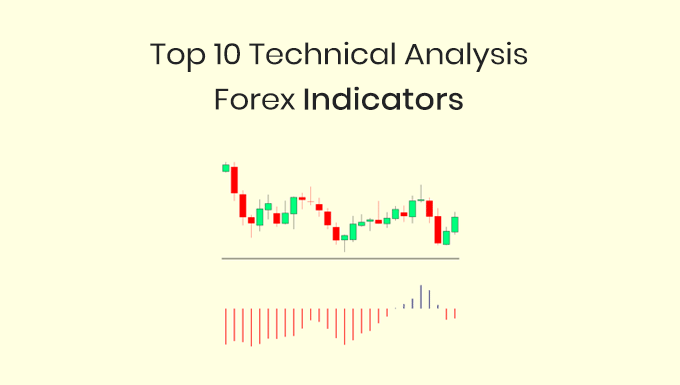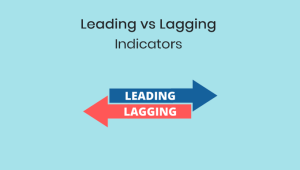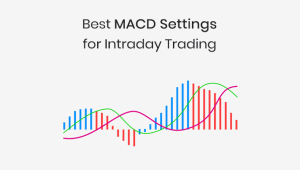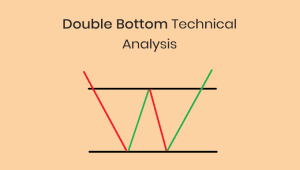Technical analysis indicators are an essential component of forex trading, and they help traders make profitable trades based on market trends. In this article, we will discuss the best technical indicators, their types, and how to use them effectively to improve your trading performance.
Table of Contents
• Key Features of Technical Analysis Indicators
• Types of Technical Analysis Indicators
• Top 10 Technical Analysis Indicators for Forex Trading
• What You Need to Know Before Using Technical Indicators
• How to Use Technical Indicators in Forex Trading?
• How to Get Better Results With Technical Indicators?
• Common Mistakes to Avoid When Using Technical Indicators
• Conclusion
• FAQs
What Are Technical Analysis Indicators?
Technical indicators are mathematical calculations based on historical price and volume data that help traders to identify market trends and predict future price movements. They are used to analyze various aspects of the market, including trend direction, momentum, volatility, and volume. Technical indicators are categorized into four main types, including trend indicators, momentum indicators, volatility indicators, and volume indicators.
Key Features of Technical Analysis Indicators
- Technical analysis indicators are based on historical price and volume data.
- These indicators are used to analyze and predict future price movements.
- They can provide traders with valuable insights into the market trends and potential trade opportunities.
- The 4 main types of technical analysis indicators include trend, momentum, volatility, and volume indicators.
Types of Technical Analysis Indicators
1. Trend indicators
Trend indicators are used to identify the direction of the market trend. They are commonly used by traders to identify the direction of the trend and to take appropriate trading positions. Examples of trend indicators include Moving Averages, Average Directional Index (ADX), and Bollinger Bands.
2. Momentum indicators
Momentum indicators are used to measure the rate of change of price movements in the market. They are commonly used by traders to identify the strength of the market trend and to predict the direction of the trend. Examples of momentum indicators include Relative Strength Index (RSI), Stochastic Oscillator, and MACD.
3. Volatility indicators
Volatility indicators are used to measure the volatility of the market. They are commonly used by traders to identify potential trading opportunities and to manage their risk exposure. Examples of volatility indicators include Average True Range (ATR), Bollinger Bands, and Chaikin’s Volatility Indicator.
4. Volume indicators
Volume indicators are used to measure the volume of trades in the market. They are commonly used by traders to identify market trends and to predict future price movements. Examples of volume indicators include On-Balance Volume (OBV), Accumulation/Distribution (A/D) Line, and Money Flow Index (MFI).
Top 10 Technical Analysis Indicators for Forex Trading
1. Moving Averages
Moving averages are one of the most popular indicators used by traders. Moving averages are calculated by taking the average price of an asset over a specified period of time. They help to smooth out the price action and identify the trend direction. The 20-day, 50-day, and 200-day moving averages are commonly used by traders to identify trend direction, support and resistance levels, and potential entry and exit points for trades.
2. Relative Strength Index (RSI)
The RSI indicators are momentum-based technical analysis indicators that are used to measure the strength of a trend and identify potential trend reversals. It oscillates between 0 and 100 and is used to identify overbought and oversold conditions in the market. A reading above 70 is considered overbought, while a reading below 30 is considered oversold.
3. Bollinger Bands
Bollinger Bands consist of a moving average and two standard deviations. They are used to identify the volatility of a market and to determine potential support and resistance levels. When the market is in a period of low volatility, the bands will narrow, and when the market is in a period of high volatility, the bands will widen.
4. MACD
The Moving Average Convergence Divergence (MACD) is a trend-following momentum indicator that shows the relationship between two moving averages. It consists of a MACD line and a signal line. When the MACD line crosses above the signal line, it is considered a bullish signal, and when it crosses below the signal line, it is considered a bearish signal.
5. Fibonacci Retracement
The Fibonacci retracement levels are used to identify potential support and resistance levels in the market. The levels are based on the Fibonacci sequence and are drawn from the high to the low or low to high of a trend. The most common retracement levels are 38.2%, 50%, and 61.8%.
6. Stochastic Oscillator
The Stochastic Oscillator is a momentum indicator that measures the closing price relative to the high-low range over a specified period. It oscillates between 0 and 100 and is used to identify overbought and oversold conditions in the market.
7. Average Directional Index (ADX)
The ADX is a trend indicator that measures the strength of a trend. It consists of three lines: the ADX line, the +DI line, and the -DI line. When the ADX line is above 25, it is considered a strong trend, and when it is below 25, it is considered a weak trend.
8. Ichimoku Cloud
The Ichimoku Cloud is a trend-following indicator that uses multiple lines to identify potential support and resistance levels in the market. It consists of five lines: the Tenkan-sen, Kijun-sen, Chikou Span, Senkou Span A, and Senkou Span B.
9. Parabolic SAR
The Parabolic SAR is a trend-following indicator that is used to identify potential reversal points in the market. It consists of dots that are placed above or below the price action. When the dots are below the price action, it is considered a bullish signal, and when they are above the price action, it is considered a bearish signal.
10. On-Balance Volume (OBV)
The OBV is a volume indicator that measures the buying and selling pressure in the market. It is calculated by adding the volume on up days and subtracting the volume on down days. When the OBV is trending upwards, it is considered a bullish signal, and when it is trending downwards, it is considered a bearish signal.
What You Need to Know Before Using Technical Indicators
Trading indicators are a valuable tool for any trader, but they must be used correctly to be effective. In this article, we’ll go over some important rules for using trading indicators and how to make the most of them.
1. Don’t use indicators in isolation
The first rule of using trading indicators is that you should never use them in isolation. Instead, use them in conjunction with other tools to get a more accurate picture of what’s going on in the market. Using too many indicators at once can also be overwhelming and lead to confusion, so focus on a few that you think are best suited to what you’re trying to achieve.
2. Use indicators with price action
Technical indicators are useful, but they’re not foolproof. It’s important to use them alongside your own assessment of an asset’s price movements over time, which is known as “price action”. This will give you a better understanding of the market and help you make more informed decisions.
3. Confirm signals
One of the most important things to remember when using trading indicators is that you must confirm signals in some way. If you’re getting a ‘buy’ signal from an indicator and a ‘sell’ signal from the price action, you need to use different indicators or different time frames until your signals are confirmed. This will help you avoid false signals and make more accurate trades.
4. Stick to your trading plan
Finally, it’s essential to never lose sight of your forex trading plan. Your rules for trading should always be implemented when using indicators. If an indicator suggests that you make a trade that goes against your plan, you should ignore it and stick to your strategy. By doing so, you’ll be able to make more consistent profits over time.
How to Use Technical Indicators in Forex Trading?
Technical indicators can be used in various ways to analyze the market and make informed trading decisions. Some of the common ways of using technical indicators include:
1. Identifying market trends
Technical indicators can be used to identify the direction of the market trend. Traders can use trend indicators such as Moving Averages to identify the direction of the trend and to take appropriate trading positions.
2. Predicting price movements
Momentum indicators can be used to predict the direction of the price movement. Traders can use momentum indicators such as RSI and MACD to identify the strength of the market trend and to predict future price movements.
3. Managing risk exposure
Volatility indicators can be used to manage risk exposure. Traders can use volatility indicators such as ATR and Bollinger Bands to identify potential trading opportunities and to manage their risk exposure.
4. Increase accuracy
Use multiple indicators to confirm trading signals before making a trade.
5. Set stop-loss and take-profit levels
Once a trade has been entered, use technical indicators to set stop-loss and take-profit levels. Stop-loss levels help to limit potential losses, while take-profit levels help to lock in profits.
How to Get Better Results with Technical Indicators?
1. Pairing indicators
When using technical indicators, it’s important to choose the right pairing to help you identify when to enter and exit a trade. Consider using a leading indicator like RSI, combined with a lagging indicator like MACD. Leading indicators generate signals before the conditions for entering a trade have emerged, while lagging indicators generate signals after those conditions have appeared. Combining them can help prevent you from trading on false signals.
It is also important to select pairs of indicators from different types, never two of the same type. The four main types of indicators are trend, momentum, volatility, and volume. Trend indicators, such as MACD, identify the direction of the price trend. Momentum indicators, such as RSI, measure the strength of the trend. Volatility indicators are based on the volatility in the asset’s price, while volume indicators are based on trading volumes of the asset.
Pairing up indicators from different types can provide a more comprehensive analysis of the market and increase your chances of success.
2. Use multiple indicators
If you want even more reinforcement of your trading signals, you can choose to have one indicator of each type onscreen, with two leading and two lagging indicators. This will give you a more complete picture of the market and help you avoid false signals.
3. Refine indicators
No matter which indicators you use, it’s important to analyze their effectiveness over time. Ask yourself questions such as: What are an indicator’s drawbacks? Does it produce many false signals? Does it fail to signal, resulting in missed opportunities? Does it signal too early or too late?
You may find that an indicator works well for trading stocks but not for forex, for example. In such cases, you can swap out the indicator for another one of its type or make changes in how it’s calculated. Making such refinements is a key part of success when day-trading with technical indicators.
4. Customize indicator settings
You can also customize the indicators you choose by modifying the numbers used in their calculation.
For example, you can set the top line of a Fibonacci retracement at 78.6% instead of 61.8% if this helps you identify price movements better. However, it is essential to test any modifications thoroughly before using them in live trading.
5. Consider the time frame
Different technical indicators may perform more effectively on different time frames, so consider the time frame of your trade when selecting indicators.
Common Mistakes to Avoid When Using Technical Indicators
1. Over-reliance on indicators
Traders often over-rely on indicators and forget to use their own judgment. Technical indicators are tools that provide insights into the market’s behavior, but they should not be used as a substitute for traders’ judgment. Traders need to use their own judgment to interpret the signals and make trading decisions.
2. Using too many indicators
One of the biggest mistakes traders make when using technical indicators is overusing them. Using too many indicators can lead to confusion and indecision. Traders often think that more indicators mean more accuracy, but that’s not always the case. Overusing indicators can result in contradictory signals, making it difficult for traders to make a trading decision.
3. Ignoring fundamental analysis
Another common mistake traders make when using technical indicators is using them in isolation. Technical indicators are tools that provide insights into the market’s behavior, but they should not be used in isolation. Traders need to consider other factors such as market trends, news, and economic indicators when making trading decisions.
4. Not understanding the indicator
Traders often use technical indicators without understanding how they work. Technical indicators are complex tools that require a thorough understanding to use effectively. Using an indicator without understanding its calculations and interpretation can lead to inaccurate signals.
5. Ignoring the timeframe
Technical indicators work differently on different timeframes. Ignoring the timeframe can result in inaccurate signals, leading to wrong trading decisions. Traders often use technical indicators without considering the timeframe, which can be a costly mistake.
Conclusion
Technical analysis indicators can be a useful tool for traders looking to analyze market trends and make informed trading decisions. However, in addition to the indicators discussed above, traders should also consider the market conditions, economic events, and other factors that can impact the price action. It’s also essential to have a solid trading plan, a risk management strategy, and the discipline to stick to them. By avoiding common mistakes and adapting to changing market conditions, traders can effectively use technical indicators to improve their trading performance.
FAQs
Q: Are technical indicators reliable?
A: The reliability of technical indicators varies depending on a number of factors, including market conditions, the specific indicator being used, and the timeframe being analyzed.
Q: Are technical indicators always accurate?
A: No, technical indicators are not always accurate. They are based on historical data and cannot predict future price movements with certainty. It’s important to use indicators in conjunction with other analysis tools and to understand their limitations.
Q: How many technical indicators should I use for Forex trading?
A: There is no set number of technical indicators that you should use. It is important to find the indicators that work best for your trading strategy and use them effectively.
Q: How do I choose the best technical indicators for my trading?
A: Choosing the best technical indicators for your trading will depend on your trading style, goals, and preferences. It’s important to research and test different indicators to find the ones that work best for you.
Q: How do traders use technical indicators in conjunction with other analysis techniques?
A: Traders often use technical indicators in conjunction with other analysis techniques, such as fundamental analysis, to make well-informed trading decisions. Technical analysis can help identify potential entry and exit points, while fundamental analysis can provide insights into the underlying factors affecting the asset’s price.
Q: Can technical indicators be used for other markets besides Forex?
A: Yes, technical indicators can be used for other financial markets, such as stocks and commodities.






